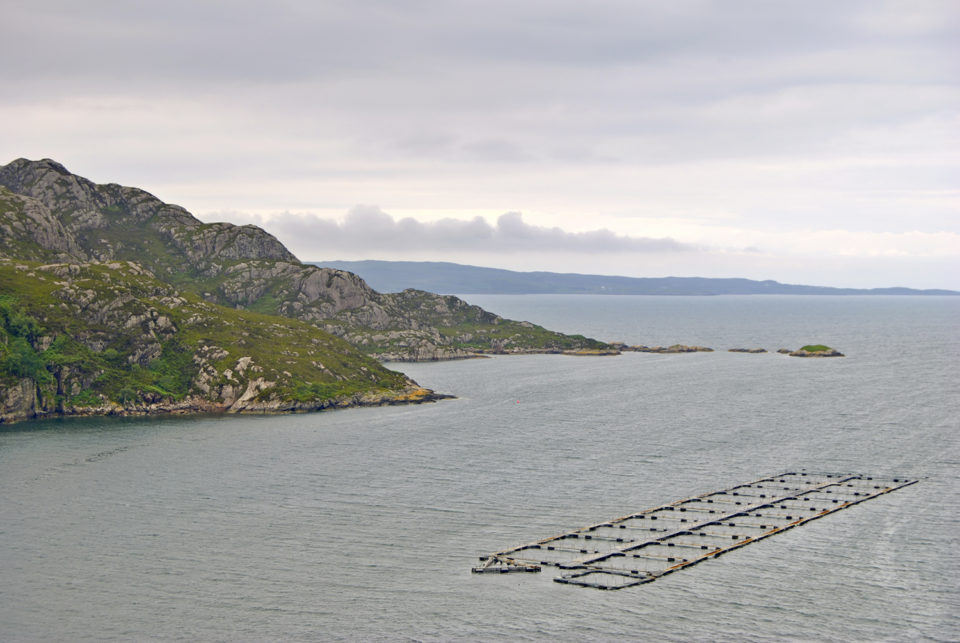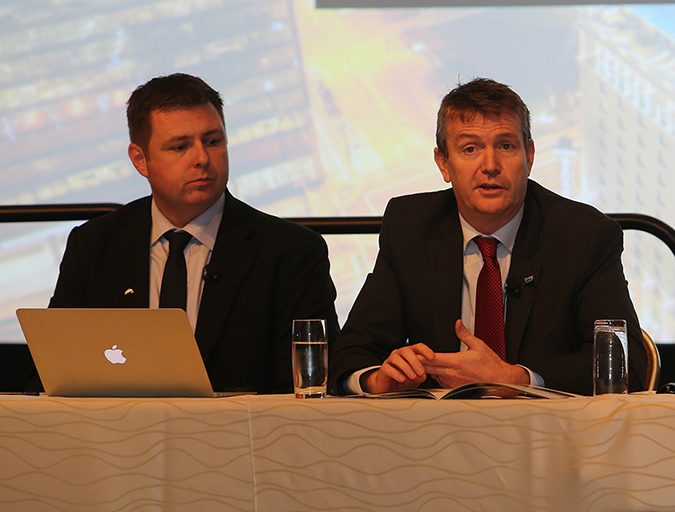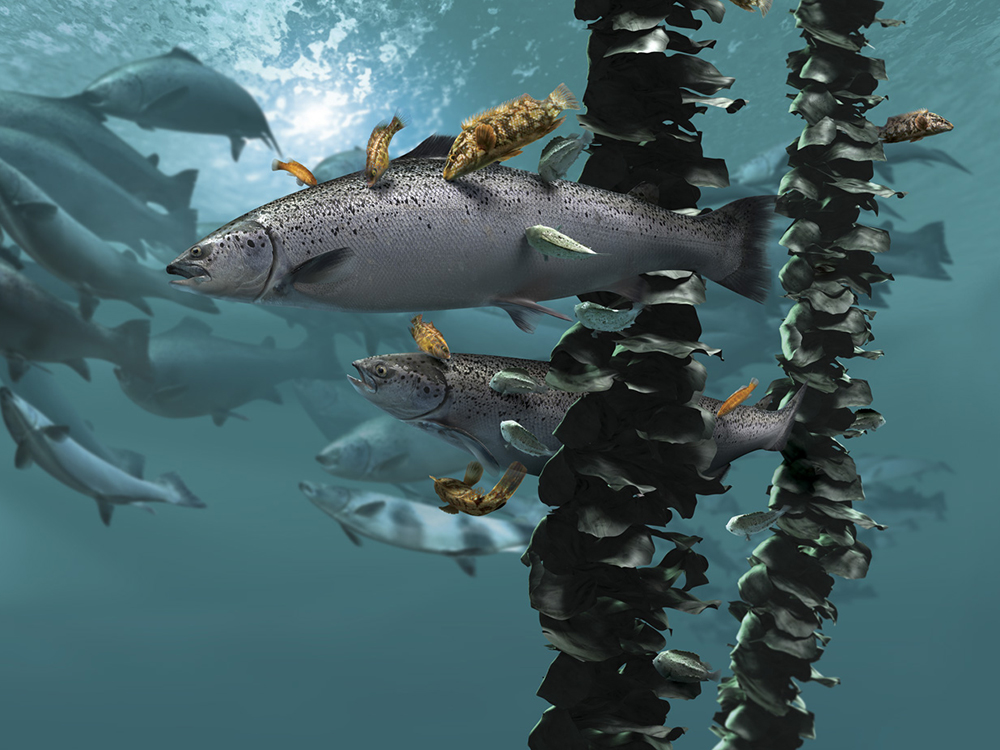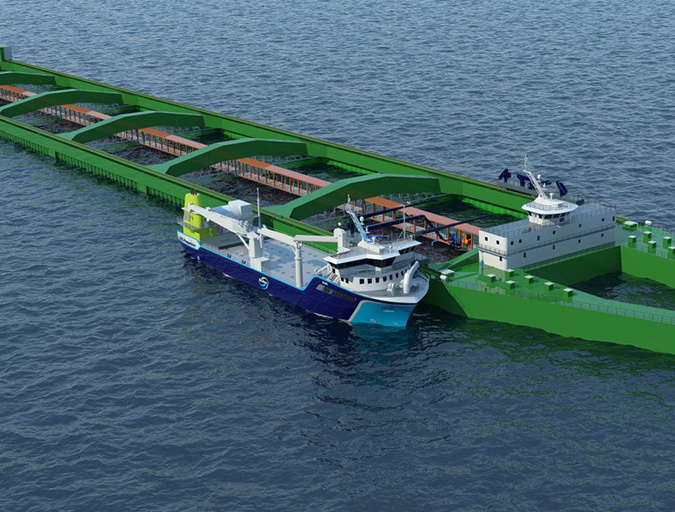Nation’s top food export sector suffers high number of losses

Scotland’s farmed salmon industry found itself at the center of a row following the release of the latest sea lice figures and acknowledgement that up to 10 million salmon – a quarter of all stocks – were thrown away last year as a result of disease, parasites and other issues.
Official figures show that the volume of dead fish sent for disposal has increased year on year from 10,599 metric tons (MT) in 2013 to 22,479 MT in 2016. Seal attacks, sea lice treatments, poor handling and algal blooms are among the industry’s banes.
However, a growing and diverse number of environmental campaigners argue that the true damages are up to twice as bad, and they warn that the industry is facing an “environmental disaster.” That’s because in addition to the issue of fish welfare, campaigners say salmon farms are responsible for declining wild salmon and trout stocks. There is also concern about the transportation of dead, diseased fish to England for destruction in a central toxic waste incinerator.
John Robins, secretary of the Save Our Seals Fund (SOSF), wrote to the Scottish government to point out that the contaminated convoys cross many rivers with vulnerable populations of native wild salmon on their journey. He urged salmon farmers to build facilities to deal with waste on-site instead of transporting it hundreds of miles.
“Instead of continually kowtowing to the mainly foreign-owned salmon farming industry, the Scottish government must address the welfare problems on salmon farms and protect our marine environment and our native salmon and sea trout from this polluting industry,” he said in an email to Ministers, seen by the Advocate.
SOSF and pressure group Animal Concern have asked the government to introduce a moratorium to block new farms until disease issues have been resolved and disposal sites can be set up closer to industry operations.
Salmon & Trout Conservation Scotland (S&TC) is a vociferous anti-salmon campaigner that has questioned how fish farms can be endorsed by the Royal Society for the Prevention of Cruelty to Animals (RSPCA) given the levels of mortality. The RSPCA’s Assured scheme for salmon offers consumers reassurance that they are purchasing “products from animals that have had a better life.” It covers all aspects of a salmon’s lifecycle, including health, diet, environment, care and handling. Salmon farms are regularly audited to ensure that the RSPCA welfare standards are being met.
The Scottish Salmon Think-Tank, a new group that believes self-regulation of the industry is not working, is also on the case.
“The whole salmon farming business model is broken and far from sustainable as it claims to be,” said the Think-Tank’s Lynn Schweisfurth.
“These worrying figures are the hallmarks of an industry in crisis and it’s our rural communities that will suffer as the problems continue.”
The list of diseases that can affect farmed salmon and trout includes Proliferative gill disease (PGD), Amoebic gill disease (AGD), Cardio myopathy syndrome (CMS), Pancreas disease (PD), Rainbow trout fry syndrome (RTFS), Haemorrhagic smolt syndrome (HSS), Infectious salmon anaemia (ISA) and Heart and skeletal muscle inflammation (HSMI).
The bacterial infection Pasteurella skyensis, first identified in 2002 and named after the Isle of Skye where it was found, is also a growing issue for salmon farmers. In October, more than 125,000 fish are reported to have died from P. skyensis on the Isle of Lewis in the Outer Hebrides of Scotland.
According to a BBC report, strains of the bacteria are present in wild fish, which could be the origin of the infection, but it is feared that climate change could be making Scotland’s fish farms more vulnerable to bacterial diseases.
We have a duty to protect Scotland’s marine environment and the health and welfare of farmed fish is of utmost importance.
Vaccination is available to prevent some diseases, while antibiotics are effective for others.
Sea lice are a major issue for the global salmon industry, but it is Scotland that is currently receiving the greatest attention for its struggles. Recent data obtained under a Freedom of Information request by S&TCS showed that from November 2016 to August 2017, some farms recorded levels of sea lice up to 20 times the recommended limit for farmed fish. Salmon farms are expected to keep average sea lice numbers below a “good practice” threshold of no more than one per fish.
As a result of the data, the organisation named and shamed Britain’s leading supermarkets for selling salmon from the worst-affected farms.
Much work is being undertaken on sea lice eradication, with efforts concentrated on traditional and new pesticides, in-feed solutions and breeding for genetic resistance. A recent seminar held by genomics specialist AquaGen heard that in recent years genomic selection methods have revolutionized selective breeding in salmonids, and that results are very encouraging from the first batch of salmon bred to resist sea lice.
Jørgen Ødegård, senior scientist at AquaGen, told delegates that in recent trials, high resistant (HR) salmon demonstrated a 53 to 55 percent reduction in sea lice infestation compared to low-resistant salmon. In addition, sea lice on the HR salmon sppeared to be stressed, with stress levels increasing over time.
AquaGen is currently working with the Sea Lice Research Centre at the University of Bergen in Norway.
Further, delegates at the Global Aquaculture Alliance’s GOAL conference in Dublin in October applauded Alltech President Dr. Pearse Lyons when he announced that his company was putting extreme effort into the sea lice problem and he fully expected a result in 2018.
The Scottish government has been quick to point out that fish and shellfish farming contributes £620 million ($814 million) to the country’s economy each year and supports more than 12,000 jobs. Farmed salmon is now the No. 1 food export from Scotland.
“We have a duty to protect Scotland’s marine environment and the health and welfare of farmed fish is of utmost importance. The Scottish government are committed to working actively with the aquaculture sector to develop a strategic health framework that ensures we make further progress in tackling major problems, including emerging disease and sea lice,” said a spokesman in an interview with The Herald.
Scott Landsburgh, chief executive of the Scottish Salmon Producers Organisation (SSPO) said that while there had been unfortunate losses, fish health was being taken very seriously. All SSPO members operate in line with the organization’s independently audited Code of Good Practice, which promotes the highest possible standards of welfare.
“We work to minimize mortalities and disposal is managed in line with the government’s approved methods and legislation,” he said.
In 2016, Scotland’s salmon farming industry, which comprises 10 companies, produced 162,817 MT of harvestable salmon, 3,903 MT of organic salmon, and 43 million smolts. Overall revenue amounted to £1.8 billion ($2.4 billion) and the government has set an ambitious target for 2030 of £3.6 billion ($4.7 billion).
The industry is fully aware of the challenge it faces if it is to grow sustainably. Meanwhile, consumers think that salmon is a good product, and continue to make it one of their top five choices of seafood. They trust supermarkets to put safe food on the shelves and perhaps they are tired of endless food scandals.
Author
-
Nicki Holmyard
Nicki Holmyard has written about the seafood industry for longer than she cares to remember! A committed pescetarian, she is also a partner in the UK’s first fully offshore rope-grown mussel farm.
Tagged With
Related Posts

Health & Welfare
BC salmon farmers vow sea lice transparency
At the recent GOAL conference, the British Columbia Salmon Farmers Association committed to reveal sea lice counts at farms operating in the province while promising a future without antibiotics, despite struggles with the persistent yellow mouth disease.

Health & Welfare
In sea lice fight, salmon farmers phasing out hydrogen peroxide
An over-reliance on medical and chemical controls, along with warming waters, led to a surge in sea lice. With such treatments waning in effectiveness, operators turn to other, safer measures.

Health & Welfare
Chem-free fixes emerging in sea lice saga
Salmon farmers, using emerging technologies, are exploring new methods of sea lice mitigation in an effort to overcome one of the industry’s most persistent problems. New chemical-free innovations show an industry eager to adapt and adopt environmentally safe practices.

Aquafeeds
Omega-3 levels fall in farmed salmon but it’s still a top source
Reformulating aquaculture feeds, an industrywide initiative to reduce dependence on wild fish, has changed farmed salmon’s nutritional profile, as BBC News reported recently. The researchers on whose work the report was based say of course it has, yet it remains one of the best sources for these crucial fatty acids.


